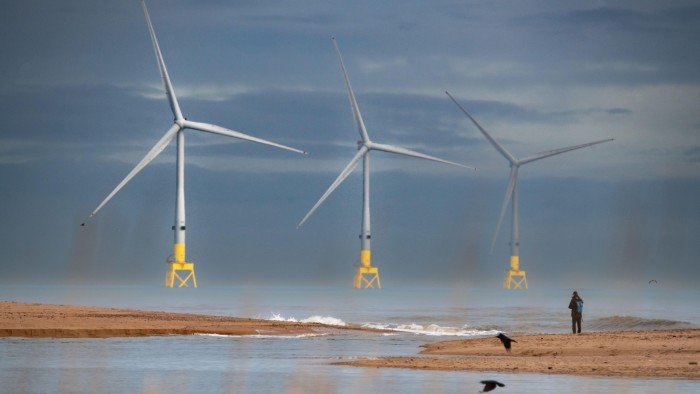Stay informed with free updates
Simply sign up to the UK energy myFT Digest — delivered directly to your inbox.
Developers of UK wind and solar farms will be offered longer subsidy contracts as ministers try to boost investment into renewable projects in a bid to meet the country’s clean power targets.
The government on Tuesday announced an extension to the “contracts for difference” scheme, raising the contract duration to 20 years from the 15-year term that has been in place since 2013.
It argued the move would spread the costs of building the infrastructure over a longer period of time and would lower financing costs for developers by reducing project risks.
The decision could raise concerns over renewable energy projects receiving state support over a longer period of time than previously envisaged, which could add to bills after 2045.
Under the scheme, the government guarantees developers a fixed “strike” price for the electricity they generate via a levy on consumer bills. If the strike price is higher than the wholesale price, developers must pay back the difference.
The contracts have been key to the growth of Britain’s renewables industry in recent years.
The changes announced on Tuesday will apply to fixed-bottom offshore wind, floating offshore wind, onshore wind and solar technologies.
“As well as reducing consumer bill impact in the medium term, the extension of contracts to 20 years for selected technologies is expected to boost investor confidence in an increasingly competitive and uncertain market,” the government said.
Wind farm developers have pushed for the move ahead of what ministers hope will be the biggest-ever auction of CfD contracts for renewable energy opening in August.
The government wants to almost triple offshore wind capacity and double onshore wind capacity in order to meet its goal of low-carbon sources providing 95 per cent of Britain’s electricity generation by 2030. Industry leaders consider the target highly ambitious if not impossible.
While the UK offshore wind sector has experienced significant growth, it has struggled with rising costs and supply-chain strains over the past few years.
Only 3.8 gigawatts of new capacity has been awarded subsidy contracts over the past two auctions, after no offshore wind developer bid in the 2023 round.
A large chunk of that is on hold after Ørsted stopped developing its 2.4GW Hornsea 4 project this year due to rising costs.
The price agreed with offshore wind developers for new projects in the latest auction round was £58.87 per megawatt hour. Prices are expressed in 2012 money and indexed to inflation, so that would equate to about £85 per MWh at 2025 prices. That is slightly higher than current wholesale prices.
The government said it had considered even longer CfD contracts but had concluded that the value for money benefits beyond 20 years, for example 25 years, were “not as strong”.
Announcing several reforms to the CfD scheme today, the government said it would also relax eligibility requirements for “fixed-bottom” offshore wind projects so that they can apply for a CfD while still waiting for planning permission.
It argued this will improve “competitive tension”, although several developers have warned it could lead to developers getting contracts for projects they are unable to see through.

